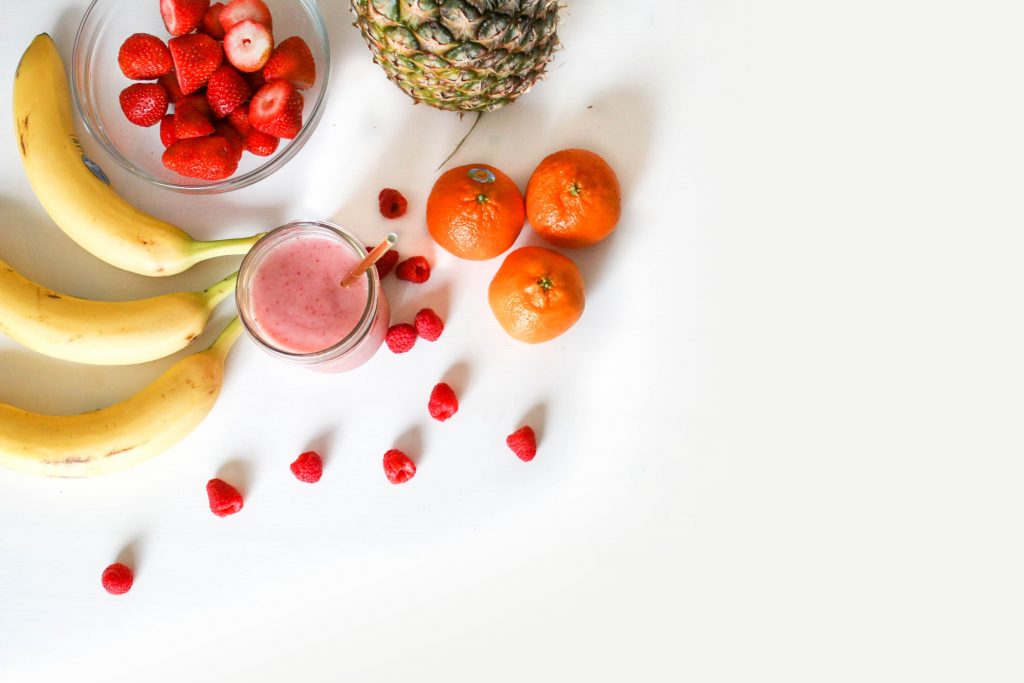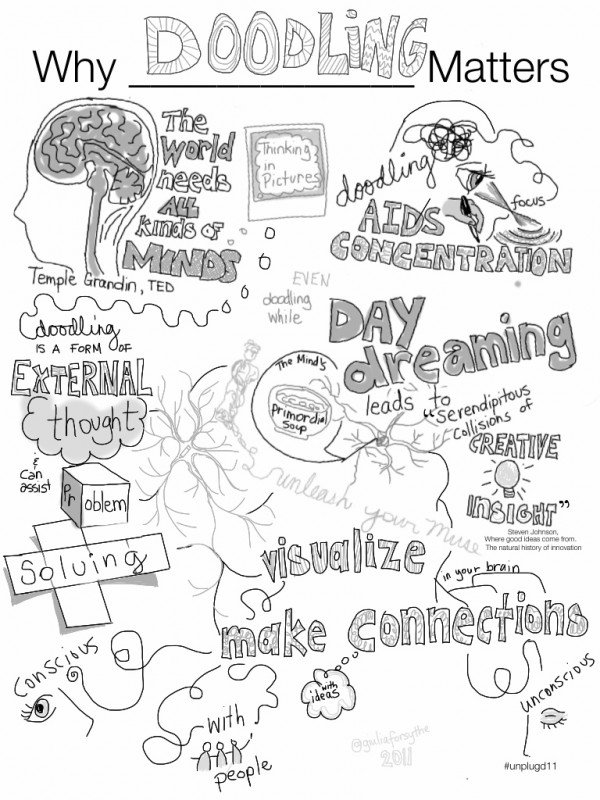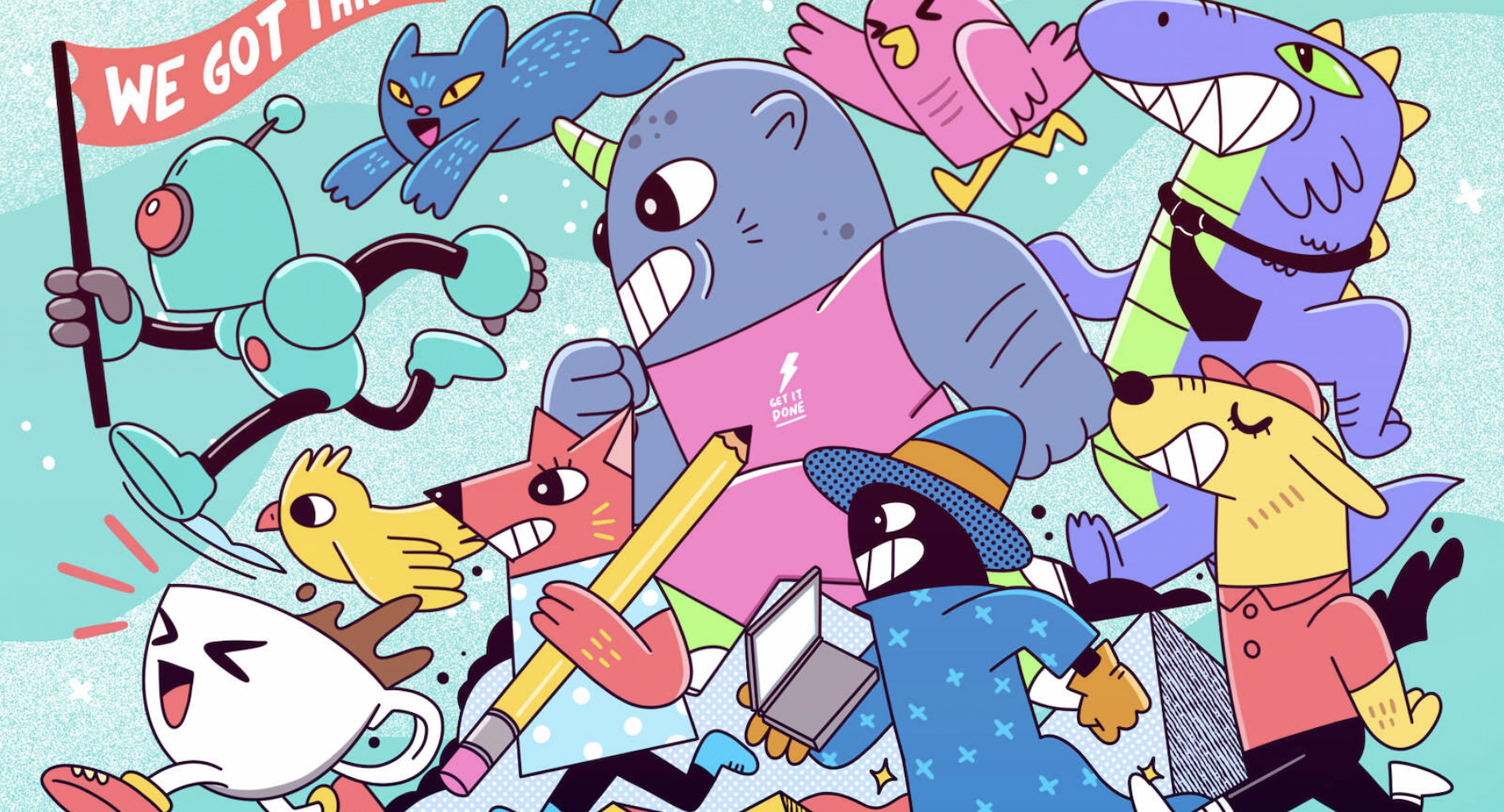Geo Law is a freelance illustrator who is from the steel city of Sheffield and currently resides at Millers Junction in Dalston London. Geo works with a plethora of different mediums including comic books, computer game characters and pop culture using mixed media all rooted in doodling. He has worked with a variety of brands and companies bringing to life teams, people and the essence of an organization. Going back to basics he often starts his design process with doodles and his faithful pen. Just a little more about his work he has created artwork for digital production, print and even interior decor with mural works. His interests range from following forms of visual culture, art, music, film, books, drinking coffee and following football. Attendees to this year’s event in Copenhagen will be able to join a workshop facilitated by Geo that focuses on one of our themes ‘A Little Pick Me Up’, the workshop will encompass the importance of incorporating playfulness in design.

1.This year we are thrilled to have you on the stage for our theme “A Little Pick Me Up”, with all of the complexities in the world, how can designers stay sane and add a bit of playfulness to their designs?
I feel creatives always look to challenge themselves in interesting ways, if there isn’t a commissioned brief there’s always a question or a pursuit that requires a playful or insightful answer. I find ways to play wherever I can with many mediums whether it’s collecting a folder of street photos on my phone and doodling over the top of them or observing street fashion and making quick notes and sketches to create characters and create my own little versions of the world I see.
Playing is the most instinctive thing to a creative person and it can be very simple, as simple as drawing 4 random lines on a sheet of paper and then figuring out how to turn those lines into something. I often remark how children draw, color and make a mess without too much overthinking, it’s instinctual and plays on an intuitiveness that links with exploration or simply taking the pen for a walk. I guess another way of looking at it is sometimes it helps to go a little carefree and crazy to stay sane, vent the energy and if you can vent it onto a canvas of some sort.
2.What does playfulness and having a healthy emotional IQ mean to you? How do you practice this?
Playfulness has always been a huge part of my upbringing, I was lucky to be given toys and video games as a kid and we’re talking about the video games with 8bit and 16 bit graphics, so the worlds were pixelated but yet we could dive into them visually and use the better part of our imaginations. Drawing and doodling is best when you can make yourself smile and others laugh and I eagerly look for this kind of energy amongst my environment and peers.
Emotional IQ is a healthy thing to be mindful of as you use experiences to share insights with others, practice self love, openness and empathy, with all that you can utilize art and design as a means to connect with others – the human experience is love, and it can be experienced on many different planes. It’s healthy to practice reflection through journal and meditation which I do occasionally and as a freelance creative, you are reminded you are having to look after yourself as well as your business and manage expectations and emotions. Securing exciting work and seeing those invoice fulfilled can be a lifting feeling but understanding the down sides and how you react to them is important.
3.As an illustrator what message do you hope to convey through your designs? Where does this inspiration come from?
I still practice drawing on paper using sketchbooks and notebooks and I doodle on large sheets of paper in the studio to practice for murals and I love drawing big with paint pens. I think the digital aspect of my work is done purely on ipad pro now, as it saves time and the quality of line I aim for needs to be pretty clean. I’ve done a lot of my learning by watching artists on youtube and some on skillshare. My workflow is probably a little chaotic to outside eyes but it works for me, it’s strange to say but if it feels natural then there’s no need to change it… until someone points out a vital life hack and then it’s great!
4.What tips and tools do you have for any designer/illustrator who is just starting out or wants to expand their creativity and learn something new?
Always start with pen and paper and rid yourself of the idea of creating perfect drawings, play by making silly things or abstract things, loosen up, loosen the mind and the hand. It’s almost like a kind of therapy, telling yourself to create without putting the pressure on yourself to create something beautiful is hard but I feel is necessary, creating beautiful things is subjective but also takes time to hone skills, so you must always remind yourself to enjoy the process and enjoy a certain type of challenge. I tend to try many things from changing my drawing implements to trying new ways of digital art making.

5.What topics are you focusing on this year for our Theme “A Little Pick Me Up”? Can you elaborate on why you think these are important?
This year I’ll focus on refreshing and recharging, I feel that’s the immediate response I feel when I need a “little pick me up” sometimes it’s a snack or a coffee, any excuse to step away from what you were doing to just refresh. Stepping away from the task or from the head loops we put ourselves in is vital, as creatives we can go through a process that’s very taxing on our thinking and our feelings towards the work and ourselves, especially when you’re stuck in the loop and can’t find a solution. Lunch breaks are the best, especiallybest especially if you don’t eat at your desk but step outside or some place else, I don’t know what the science is behind this but it always helps! At times I’ve worked on personal projects whilst being stuck or held in a waiting pattern with commercial projects. Doodling in a sketchbook for a few minutes seems to help alleviate the blockages I go through and I feel loosens the mind before I have to get back to the task at hand.

6. Drawing helps conceptualize ideas. The act of sketching something has been around for centuries, why do you think doodling/ sketching is important for even people outside of illustration to practice?
They always say a picture is worth a thousand words and it’s a great way to share complex information in a simple way. We draw flow charts, make diagrams and doodle little maps for each other as a shorthand to verbal and written explanations but also it feels instinctive when you’re a child to grab a drawing tool and create marks its fun and expressive and I’ve met non creative professionals who enjoy doodling on the side of envelopes or using coloring books as a means to use motor functions to express or simply to vent.
Sometimes doodling can be seen as a means to exercise the creative mind and pair that with motor function and I couldn’t explain why it happens or if it’s important but I do believe it’s part of how our minds function and how we like to convey abstract things onto a piece of paper whether you doodle with a purpose or not, the action of doodling feels like an expression of some kind.
In terms of sketching I feel as a species we have a love of documenting and recording, sketching is an extension of storing a memory but seeing the recording outside of your mind, it always looks different to what you intended to draw/ sketch but it invokes the feeling that you were there. Drawing to me is a soothing, stressful, fun and unknown experience as I’m drawn to self improvement and discovery, always waiting to see what’s the next thing I can draw that may surprise me, if it’s something I can use in my work or in my private projects it can answer questions or create more and that’s why I feel it’s important for people in and outside the illustration practice if you open yourself up to the act of drawing.

Cover Photo: ‘We Got This’ Courtesy of Geo Law




